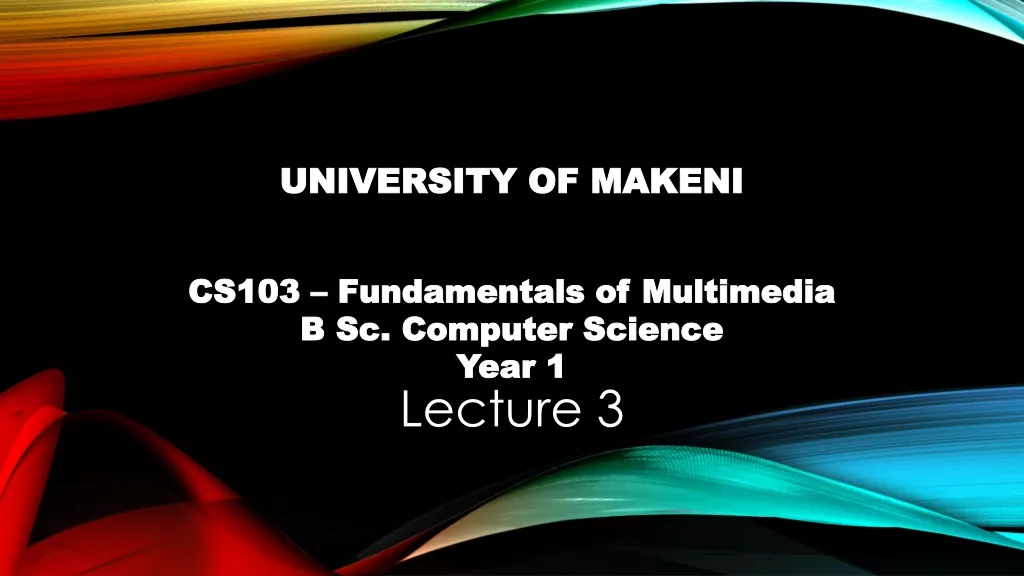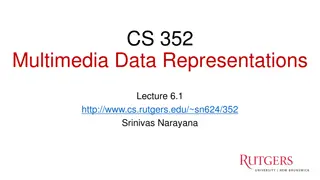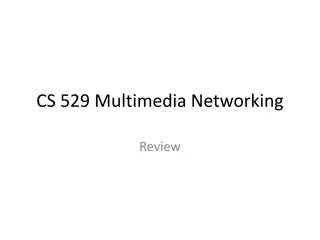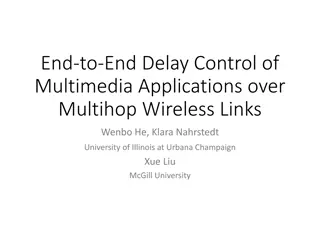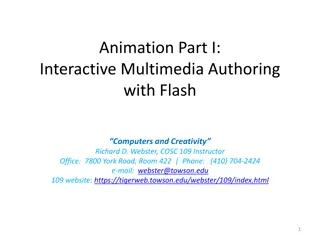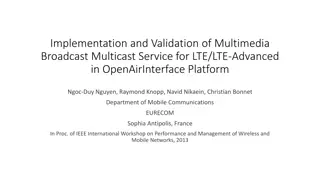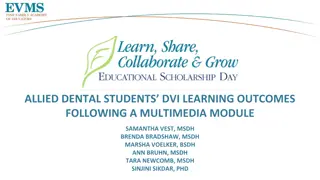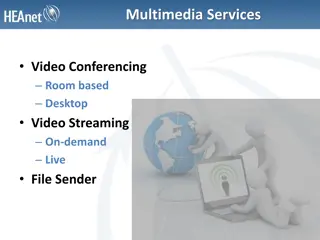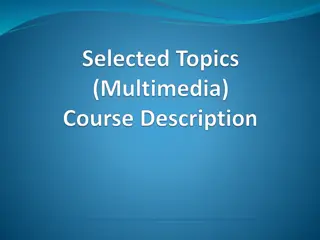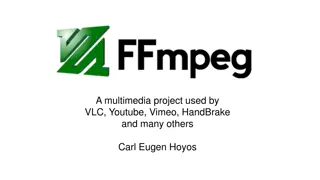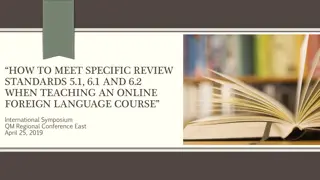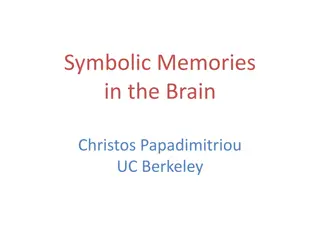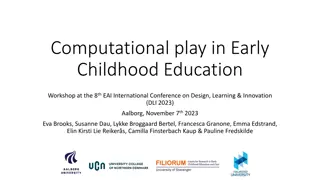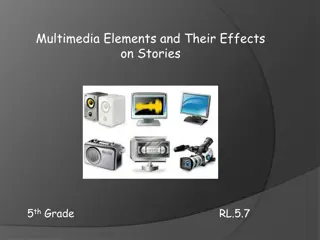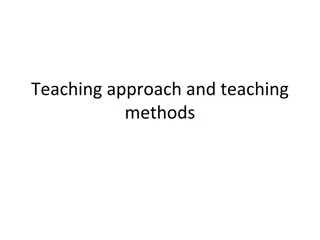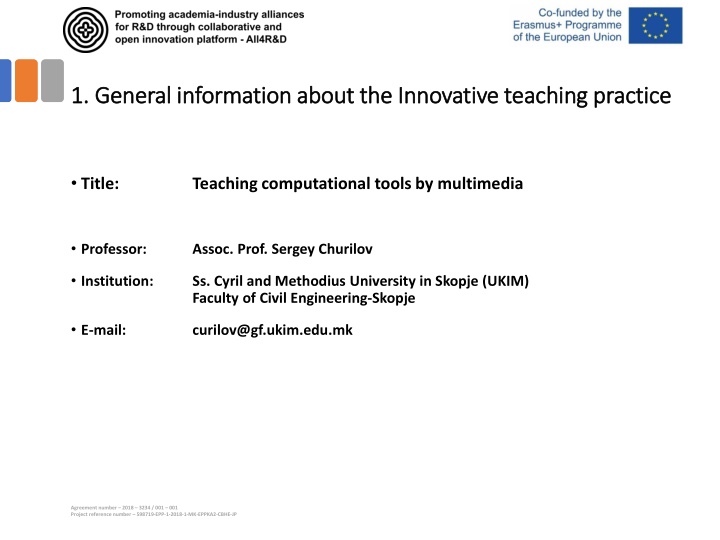
Teaching Computational Tools Through Multimedia for Enhanced Learning
Explore the innovative teaching practice of utilizing multimedia to teach computational tools in structural engineering. Enhance student engagement, knowledge retention, and skill acquisition through videos and interactive content. Duration: 4 weeks. Target group: Students, Professionals.
Download Presentation

Please find below an Image/Link to download the presentation.
The content on the website is provided AS IS for your information and personal use only. It may not be sold, licensed, or shared on other websites without obtaining consent from the author. If you encounter any issues during the download, it is possible that the publisher has removed the file from their server.
You are allowed to download the files provided on this website for personal or commercial use, subject to the condition that they are used lawfully. All files are the property of their respective owners.
The content on the website is provided AS IS for your information and personal use only. It may not be sold, licensed, or shared on other websites without obtaining consent from the author.
E N D
Presentation Transcript
1. General information about 1. General information about the Innovative teaching practice the Innovative teaching practice Title: Teaching computational tools by multimedia Professor: Assoc. Prof. Sergey Churilov Institution: Ss. Cyril and Methodius University in Skopje (UKIM) Faculty of Civil Engineering-Skopje E-mail: curilov@gf.ukim.edu.mk Agreement number 2018 3234 / 001 001 Project reference number 598719-EPP-1-2018-1-MK-EPPKA2-CBHE-JP
2. Description of the innovative teaching practice 2. Description of the innovative teaching practice Contemporary trend in educational technology Google search for: teaching + multimedia returns about 248,000,000 results teaching +computational tools + multimedia returns about 12,600,000 results Computation tool: computer program or utility that helps users: represent data, perform analysis, visualize data, process databases and etc. Multimedia: content that uses a combination of different content forms such as text, audio, images, animations, video and interactive content. Innovative practice oriented to structural engineering computational tools Communicating with Generation Z (born between 1995-2015) - Utilizing modern information technologies for teaching and learning. Agreement number 2018 3234 / 001 001 Project reference number 598719-EPP-1-2018-1-MK-EPPKA2-CBHE-JP
2. Description of the innovative teaching practice 2. Description of the innovative teaching practice Why teach with multimedia?1 When students have access to video content to watch outside of class, class time can be used for comprehension checks, discussion, and reinforcement of content. Multimedia content helps to vary and enhance the learning process, and leads to better knowledge retention. Educational video can provide more opportunities for students to engage with the content. Students around the world can learn from course content made available through video. Video can sometimes demonstrate complex ideas and access other times and places better than speaking can. Video can help instructors overcome limitations like large class sizes and limited time. 1 https://digital.bu.edu/edtech/resources/teaching-with-multimedia/ Agreement number 2018 3234 / 001 001 Project reference number 598719-EPP-1-2018-1-MK-EPPKA2-CBHE-JP
3. Duration and Target group 3. Duration and Target group Duration: 4 weeks Target group: Students, Professionals Involvement of industry or third parties: Possible, if software vendors provide content Agreement number 2018 3234 / 001 001 Project reference number 598719-EPP-1-2018-1-MK-EPPKA2-CBHE-JP
4. 4. Skills to be acquired/ improved: Skills to be acquired/ improved: Hard skills: Computer literacy, Structural Engineering analysis programs, Multimedia programs, Exercises such as assignments to reinforce skills Structural Analysis and Finite Element method Soft skills: Critical thinking Communication skills Exchange of ideas and opinions among students students and teacher students; discussions Individual learning through practice and feedback (also hard skill) Problem solving through trial and error Agreement number 2018 3234 / 001 001 Project reference number 598719-EPP-1-2018-1-MK-EPPKA2-CBHE-JP
5. Methods and techniques 5. Methods and techniques Methods: Clarifying and illustrating complex subjects Adapting to individual learning styles Improving retention and aiding recall Reaching nonverbal learners Techniques: Individual work: problem-solving, experiments, trial and error Group work: discussions, brainstorming, presentations, demonstrations Agreement number 2018 3234 / 001 001 Project reference number 598719-EPP-1-2018-1-MK-EPPKA2-CBHE-JP
6. 6. Methods Methods for assessment and evaluation of the practice for assessment and evaluation of the practice Methods for assessment: Problem solving assignments 3-2-1 reflective activity (3 ideas or issues that were learnt, 2 example or uses for how the ideas could be implemented, 1 unresolved area question) Methods for evaluation: Attendance and Completion (Participation) Student feedback forms (Data Collection) Testimonials (Subjective-Qualitative) Agreement number 2018 3234 / 001 001 Project reference number 598719-EPP-1-2018-1-MK-EPPKA2-CBHE-JP

